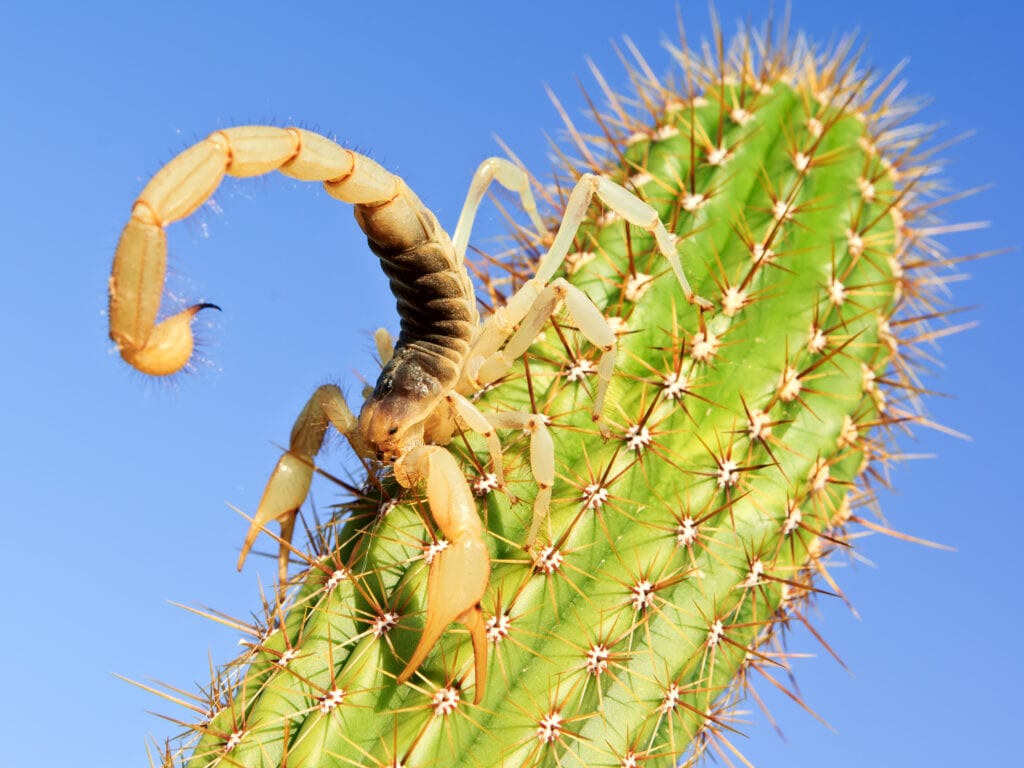 A Scorpion by Many Names
A Scorpion by Many Names
The largest scorpion in North America is known as the Desert Hairy Scorpion, and is common throughout the Sonora & Mojave deserts in the American Southwest, including Arizona. There are a few variations of the species that are extremely similar, identified by slight differences and geographic location. Officially known as Hadrurus Arizonensis, the Desert Hairy Scorpion is also known as the Giant Hairy Scorpion, Arizona Hairy Scorpion, and Giant Desert Hairy Scorpion, and are often used interchangeably.
How They Live
The distinctive feature of the Desert Hairy Scorpion is the large sensory hairs that cover its body, which are very apparent when you observe these scorpions close up. These hairs are used to detect other animals, picking up on touch, air currents, and chemicals of potential prey. As the largest of North American scorpions, they are known to grow up to about 6”, with a relatively stocky body and thick appendages.
Like other scorpions found in Arizona, Desert Hairy Scorpions have yellow arms, legs, tails and stinger, however the back of these scorpions is typically much darker, often black in appearance. Unlike the slender pincers of the more familiar bark scorpion, the pincers of the Giant Hairy Scorpion are much fatter in appearance.
The typical diet of the Desert Hairy Scorpion consists of insects, spiders, lizards, small mammals, and other scorpions. Like all scorpions, they are nocturnal, emerging from their burrows at night to hunt or mate. They are ambush predators, snaring their prey with their pincers and using their stinger to subdue their meal. Desert Hairy Scorpions are an aggressive species, and are often in competition with other scorpions in and outside of its species, and regularly observed to be cannibalistic.
Giant Hairy Scorpions are burrow dwellers, giving them the ability to escape the desert heat during the day, but can be found under rocks and in caves as well. In an urban setting, they may be found seeking shelter in vegetation or plants decorating your yard. Due to their preference for burrows, they are not found in Arizona homes as often as the well known bark scorpion.
Big & Bad, but Relatively Safe
Although Desert Hairy Scorpions are the largest species of scorpion in North America, they have a relatively mild venom. The sting of a Desert Hairy Scorpion is known to be about on par with a bee sting, and is not necessarily dangerous, unless those stung have an allergic reaction. Localized pain and some slight swelling is typically the extent of a Arizona Hairy Scorpion sting and medical attention is rarely needed, unlike the more common bark scorpion, which can lead to intense pain, numbness, and, in more serious situations like those that occur in children or more sensitive populations, difficulty breathing, nausea, muscle twitches, or heightened heart rate or blood pressure. If you are stung and unsure of the type of scorpion, it’s still best to seek immediate medial attention.
Desert Hairy Scorpions are also known as the longest-living scorpions in North America, often living up to ten years in the wild. However, in captivity they have even been known to live up to 25 years. This may contribute to their popularity as pets, as well as the relatively low-toxicity levels of their venomous sting. This sure doesn’t mean they are friendly pets, as they are still apt to sting when handled, just that they live longer and are less dangerous than other North American scorpions.
